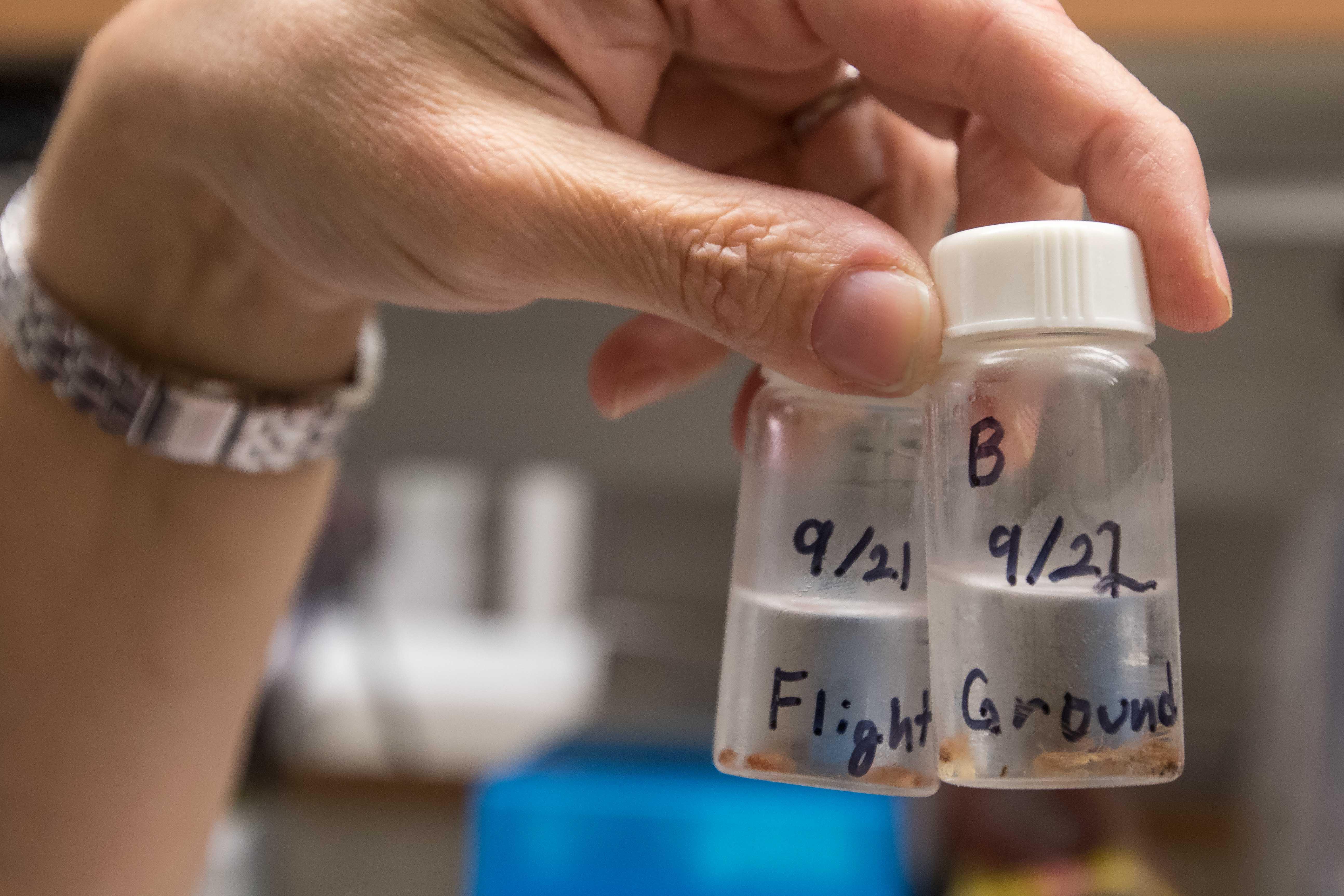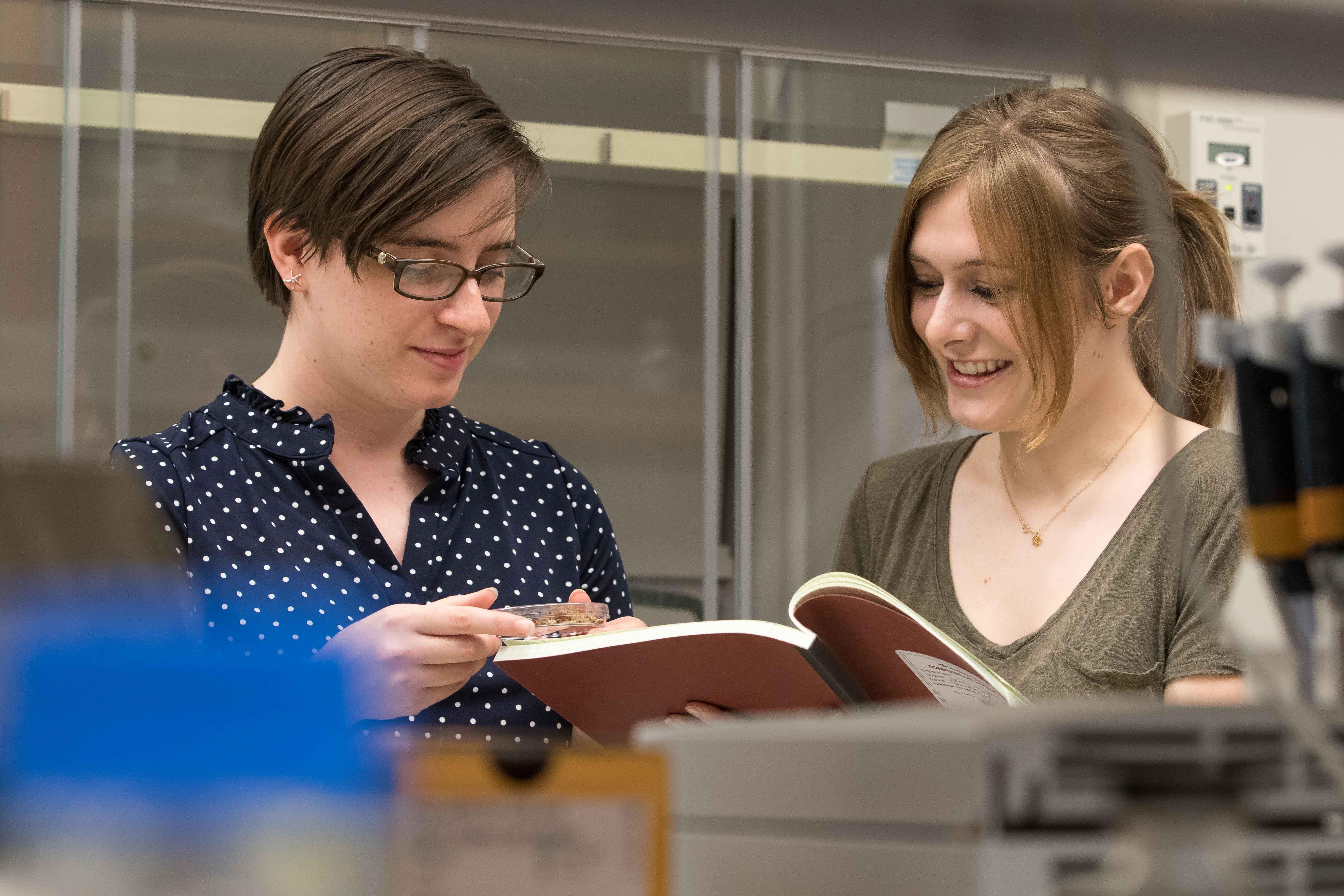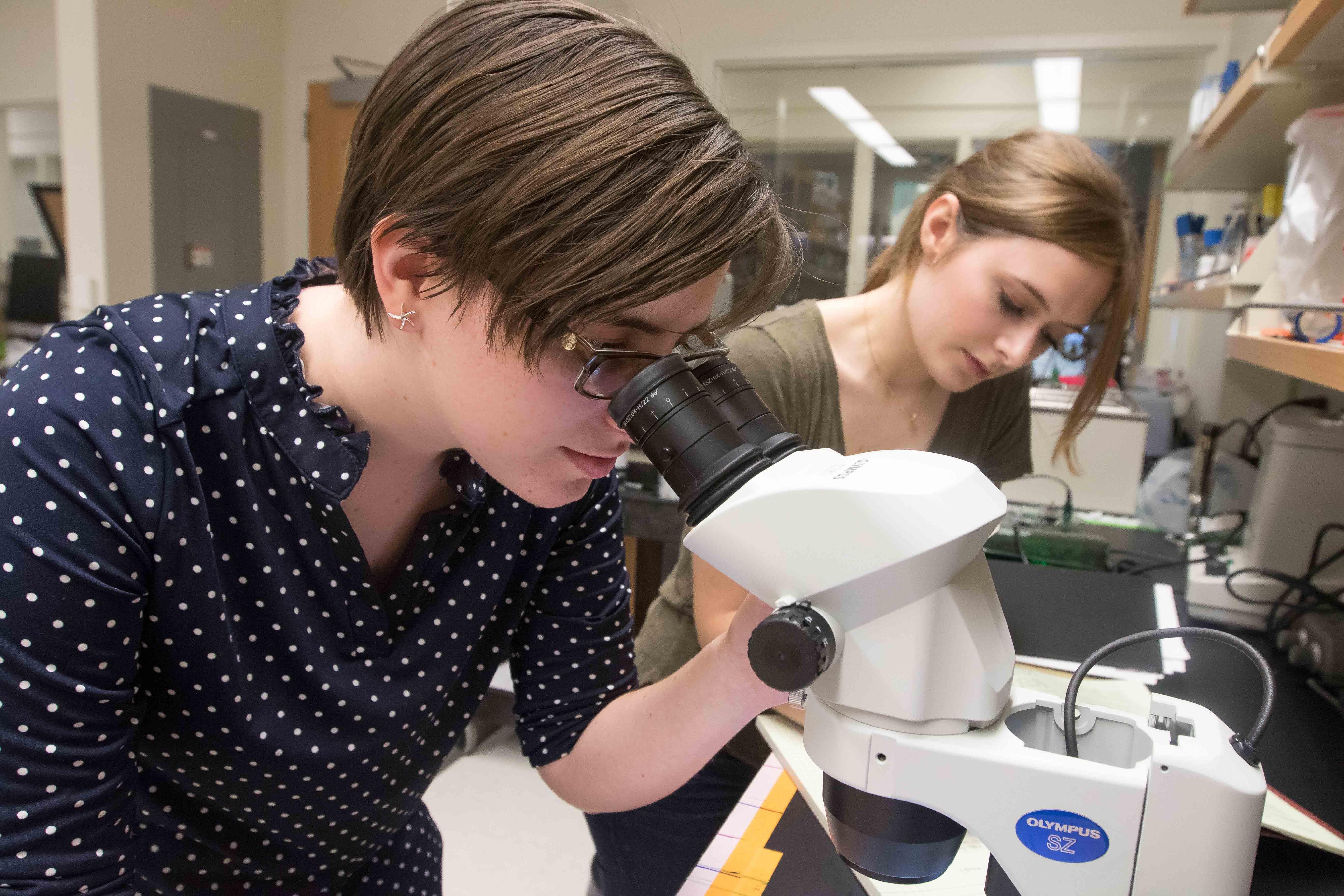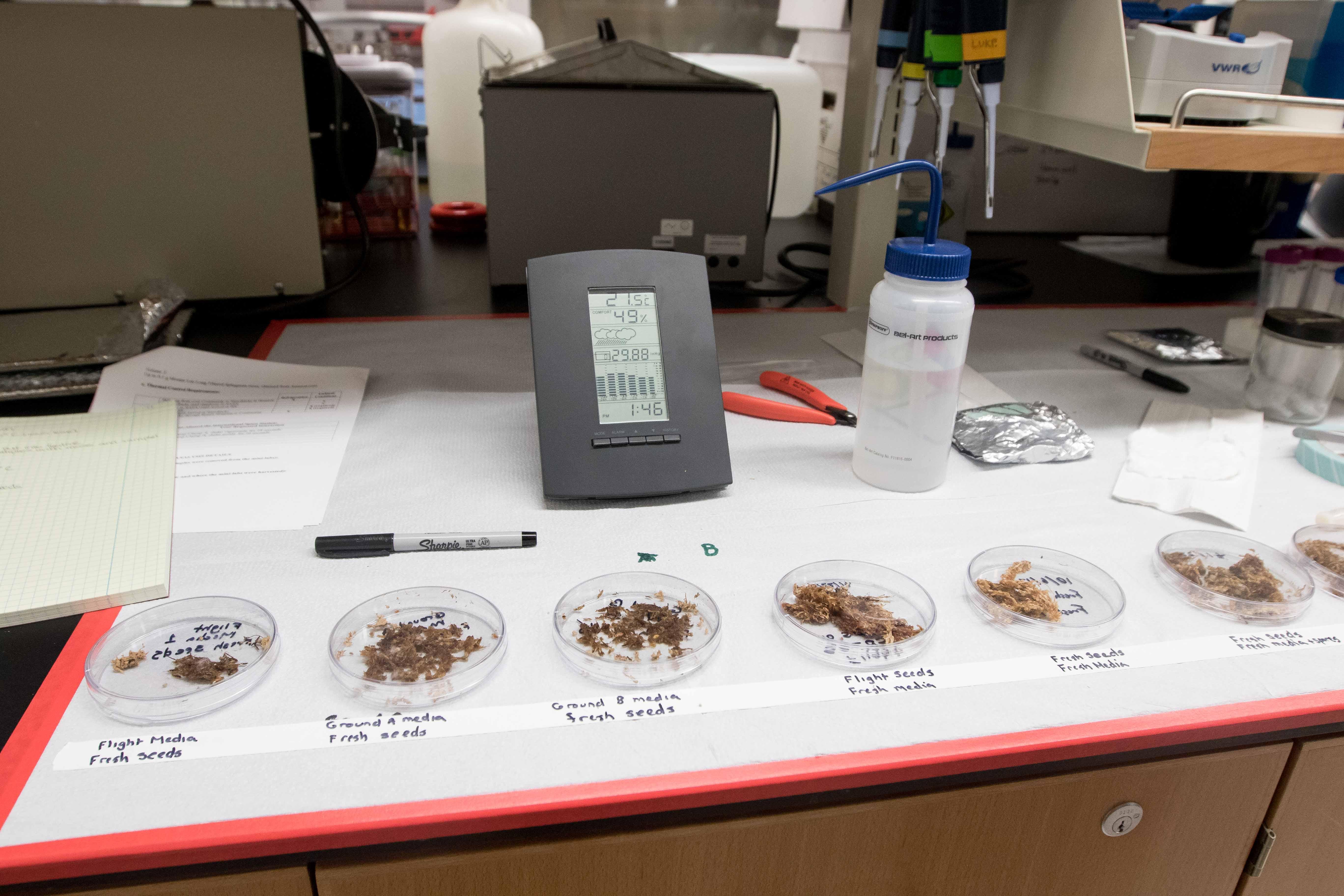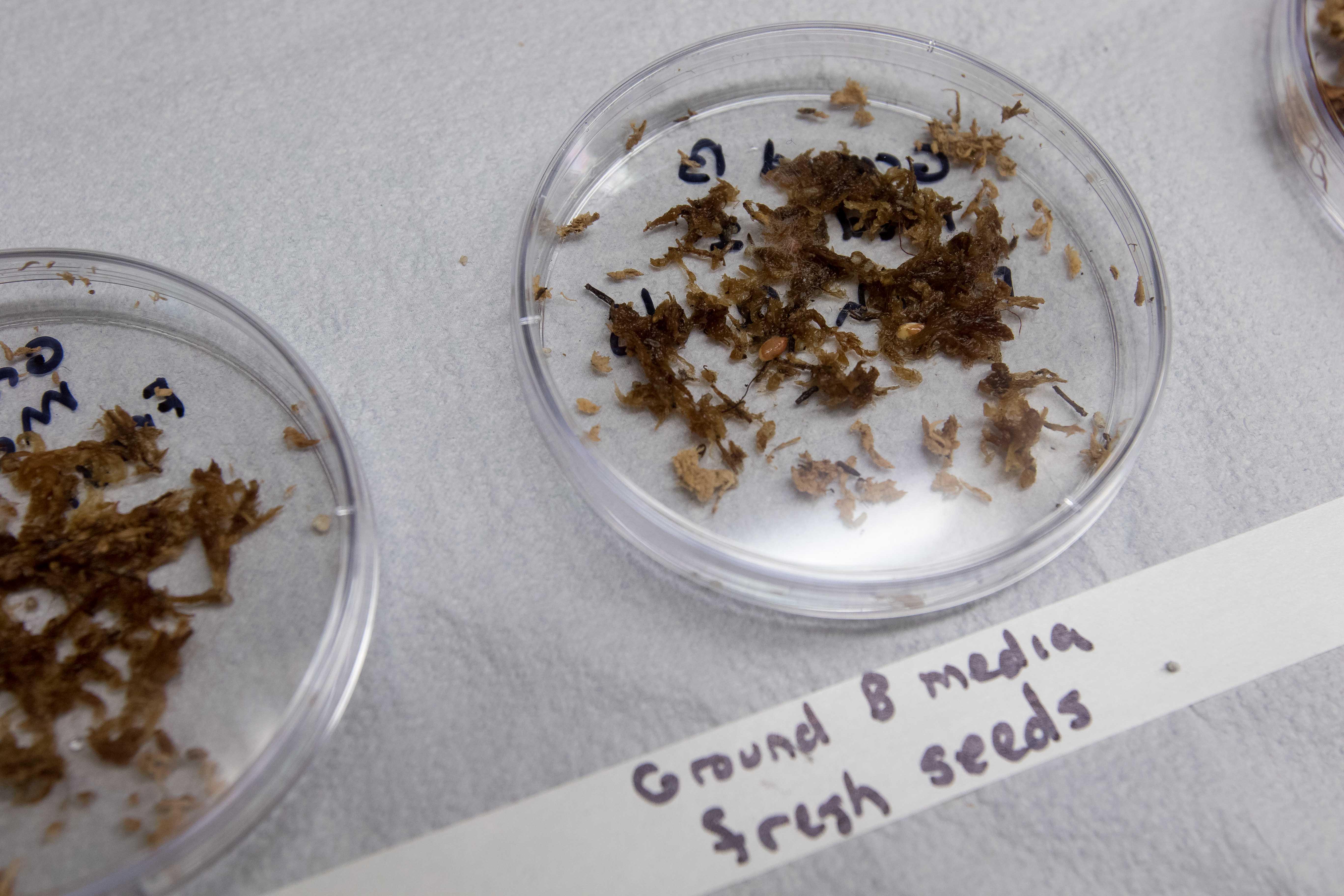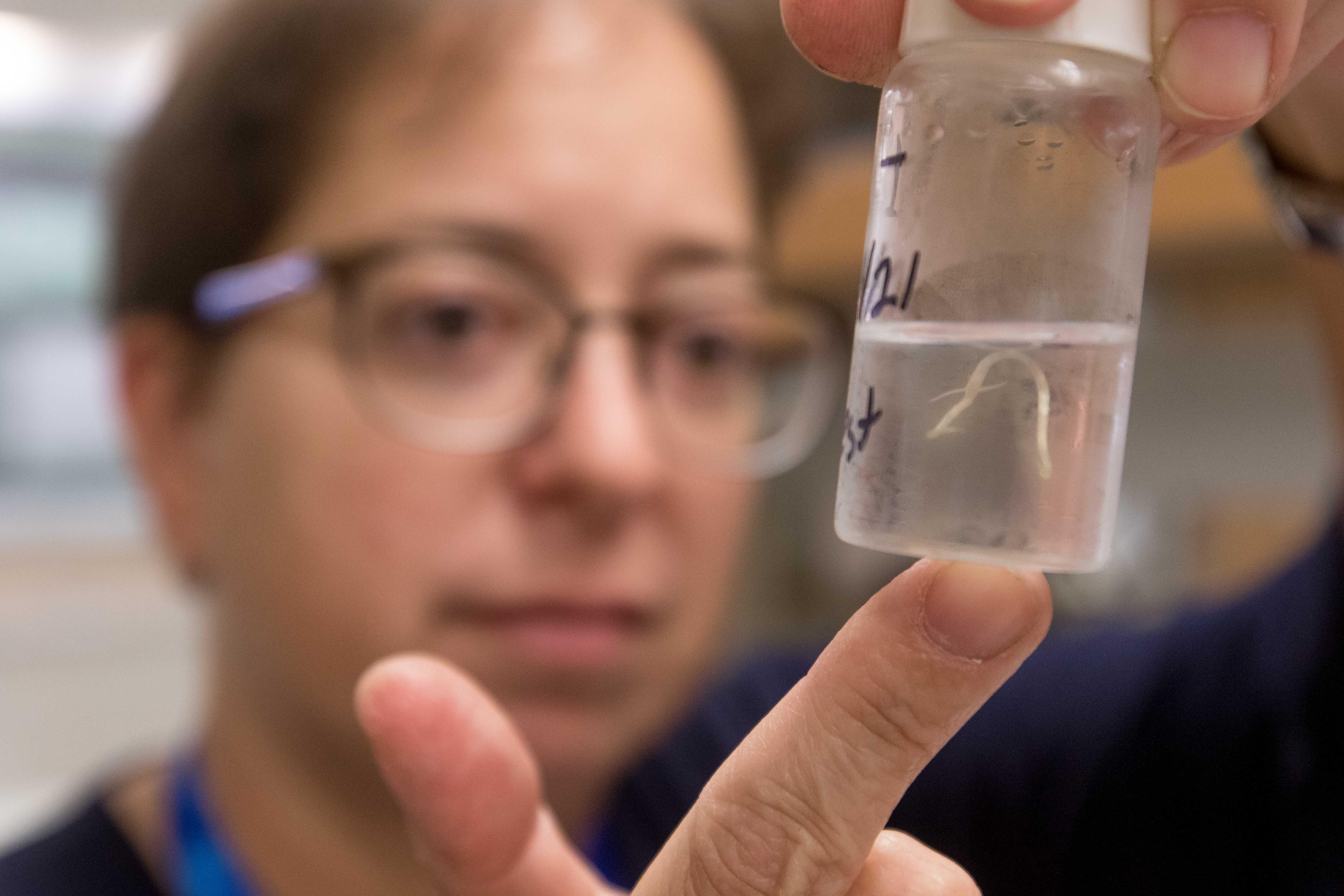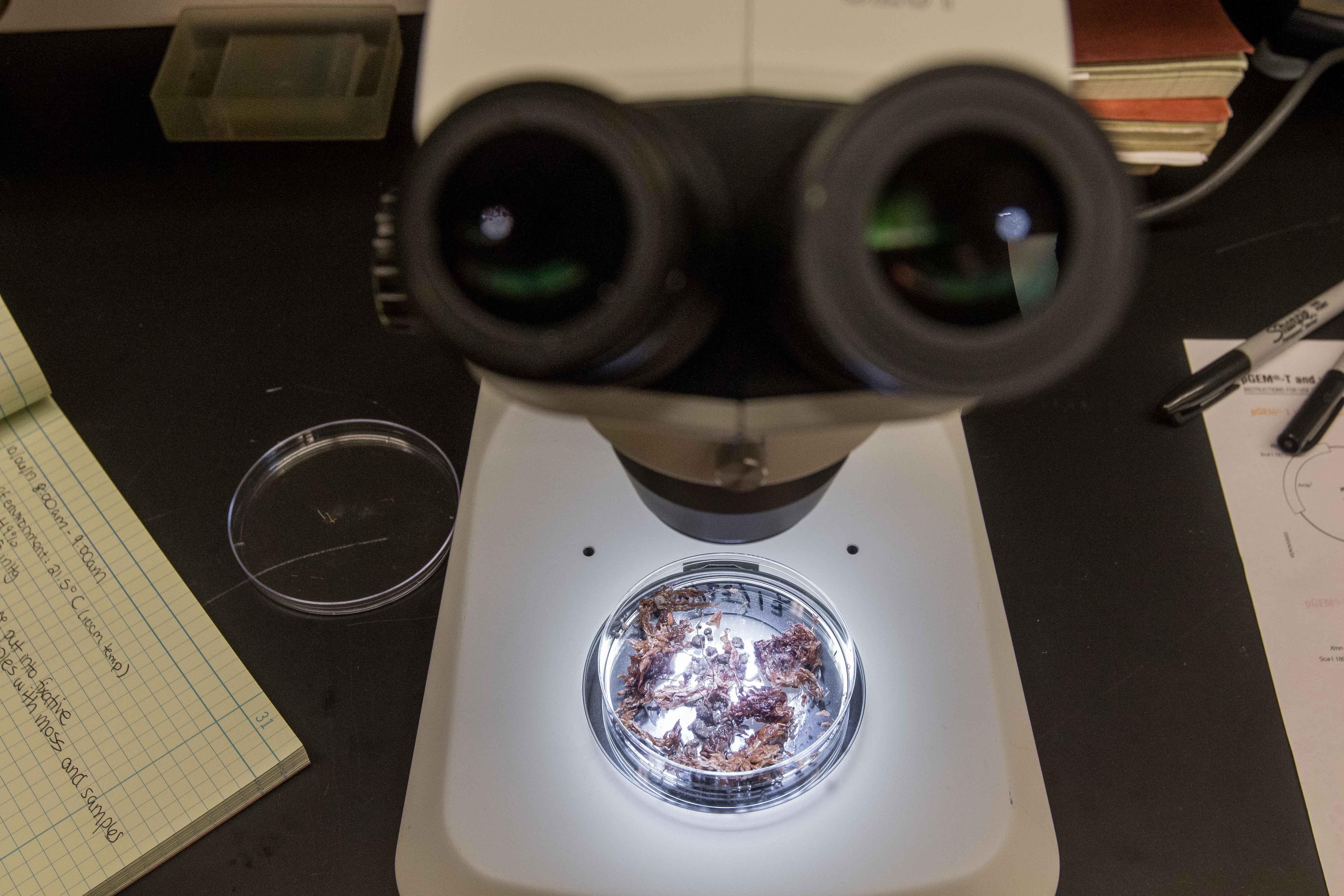Stockton Experiment Returns from Space
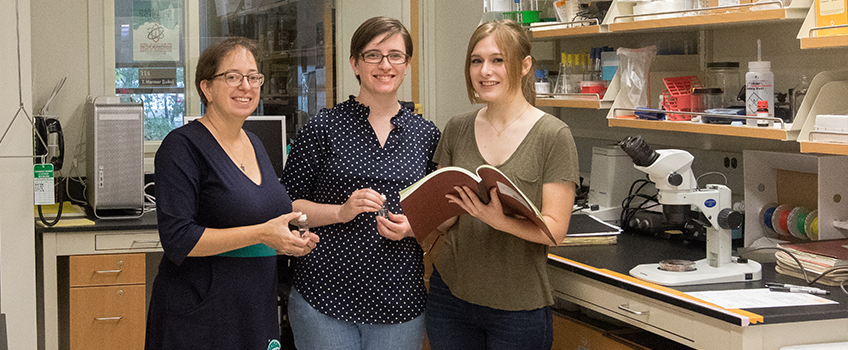
Galloway, N.J. - What goes up must come down. Stockton University’s student-designed experiment that launched to space on Aug. 14, arriving at the International Space Station (ISS) more than a day later, is back on Earth in the Unified Science Center for analysis.
“The experiment [that spent about a month in space] was overnighted to Stockton and then we hit the ground running as soon as possible. We want the data to be fresh,” explained Valkyrie Falciani, a Marine Biology graduate currently in the Teacher Education program.
Falciani, of Hammonton, N.J., and Danielle Ertz, a Biology graduate, of Woodlynne, N.J., along with faculty mentor Tara Luke, professor of Biology, created the experiment, which seeks to determine if fungus is a potential force for improving agriculture in space. Fungus can enhance growth on Earth, but the team wants to know if this fact holds true in a microgravity environment. Their final results will have an impact on long-term space travel as they will help guide further research on sustaining food supplies in space.
The experiment consisted of two identical test tubes containing precise quantities of flax seeds, fungus spores, water and sphagnum moss separated into compartments closed off by clamps. Moss serves as a growing medium that was chosen over soil because it holds water longer and has more nutrients. Flax was chosen because its seeds are edible, the plant can be used to make cloth, its extensive taproot system allows growth in limited space and it is proven to grow in space.
One test tube was sent to space while its replica stayed in the Unified Science Center, untouched in a dark drawer to match the conditions in space. The replica serves as an experimental control for a comparison of results.
The Stockton team began the experiment by opening one clamp that allowed the compartments of seeds, spores and moss to mix, and opening a second clamp allowing the water to activate the biological processes. Astronauts who received instructions from the team did the same aboard the ISS.
After a month in Earth and space, analysis is now underway with the creation of slides to observe thin slices of the root cells under a microscope. “We count the locations where spores infect the roots. [The number of spore-root interactions determines if the fungus] is as effective in microgravity as it is on Earth,” said Falciani.
The beneficial root and fungus interactions will describe the effectiveness of the symbiotic association. “The more associations, the more ability for the plant and fungus to interact,” said Luke.
Falciani and Luke were in Florida at the Kennedy Space Center in August for the launch along with Peter Straub, dean of the School of Natural Sciences and Mathematics, Norma Boakes, associate professor of Education, and students Ariel Petchel, Greg Fischer, Chedecia “Cindy” Lowe and Megan Pierce. “It was absolutely incredible to watch the rocket shooting up into space in front of us—it’s hard to describe,” explained Falciani, who had never witnessed a launch before.
“We were as close as you can be, about three miles from the launch pad, and we could hear and feel the sonic boom. Liquid oxygen is used to keep the system from overheating. When it meets the air, it evaporates. We saw the steam cloud just prior to the launch,” she said.
For Luke, who has explored the Marianas Trench (the deepest place on the planet), the experience was equally as exciting and just as much a learning experience as it was for the students.
Not only did the team witness the launch, they watched the first stage of the reusable rocket return to Earth. The experiment was transported in the SpaceX Dragon capsule on the Falcon 9 rocket, and in less than 10 minutes after launch, the first stage of the two-stage Falcon 9 returned, landing at the Cape Canaveral Air Force Station near the Kennedy Space Center.
After a month attached to the ISS, the Dragon took a plunge into the Pacific Ocean and a boat ride to land. The experiment continued on and was overnighted to Stockton where its data is now revealing an important story about agriculture in space.
Note: Stockton was selected for Mission 12 of the Student Spaceflight Experiments Program, and a class of students is currently crafting experiment proposals. One project will be chosen to go to space in the spring of 2018. The Student Spaceflight Experiments Program (SSEP) is a program of the National Center for Earth and Space Science Education (NCESSE) in the U.S. and the Arthur C. Clarke Institute for Space Education internationally.
Contact:
Susan Allen
News and Media Relations
Galloway, N.J. 08205
Susan.Allen@stockton.edu
(609) 652-4790
www.stockton.edu/media
